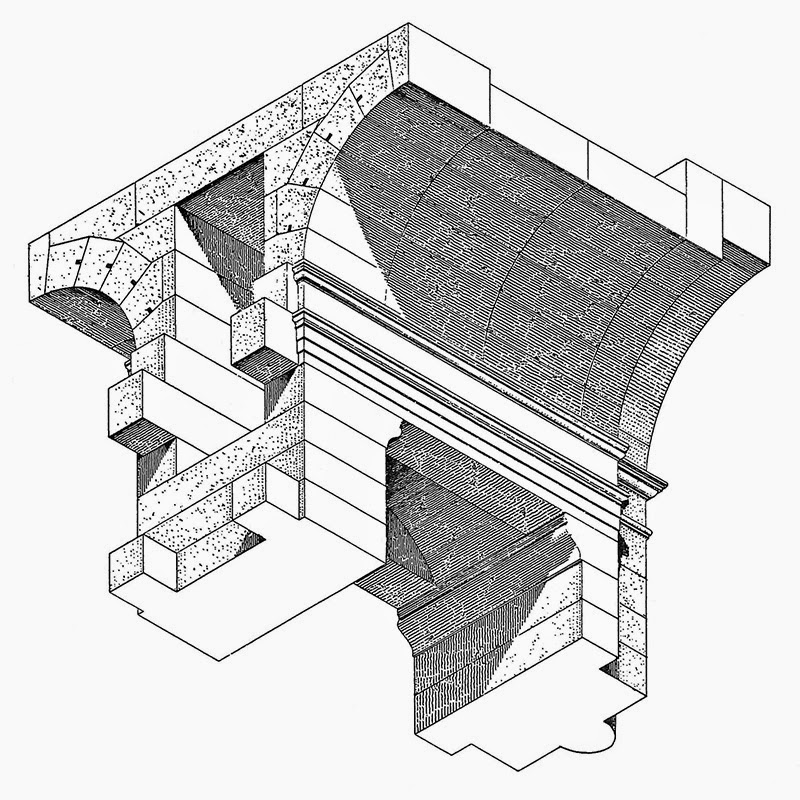Almost exactly five years ago, I was in the Norwegian town of Tromsø to speak at a conference called “Future North,” part of the annual Arctic Frontiers event.

One of the most interesting parts of my visit—and I do not say this to downplay the conference, but to indicate my enthusiasm for infrastructure—was this odd bit of traffic design: to get back and forth from Tromsø to its local airport by car, you have to pass through a sprawling underground tunnel network, complete with at least one subterranean roundabout carved into the roots of the mountain, a journey that, for someone newly arrived and jet-lagged like myself, seemed surreally endless (it probably took three minutes).
At the end of the journey, though, it gets stranger: you pop out of the ground floor of an otherwise nondescript building and turn directly onto a normal town road, passing through an opening that looks like an entrance to an underground parking garage.

These images, taken from Google Street View, show that building from the Tromsø side, peering into the mountain depths within. (Here is the tunnel entrance on Google Maps.)

While we’re on the subject of Norwegian tunnels, however, it would be a mistake not to mention the Lærdal Tunnel, allegedly “the longest road tunnel in the world.”
The tunnel is so long that, to address potential adverse effects on human neurology, it includes artificial caverns lit to invoke the Homeric glow of dawn.
 [Image: The Lærdal Tunnel, photo by Patrick Reijnders, via Wikipedia.]
[Image: The Lærdal Tunnel, photo by Patrick Reijnders, via Wikipedia.]
From Wikipedia:
The design of the tunnel takes into consideration the mental strain on drivers, so the tunnel is divided into four sections, separated by three large mountain caves at 6-kilometre (3.7 mi) intervals. While the main tunnel has white lights, the caves have blue lighting with yellow lights at the fringes to give an impression of sunrise. The caves are meant to break the routine, providing a refreshing view and allowing drivers to take a short rest. The caverns are also used as turnaround points and for break areas to help lift claustrophobia during a 20-minute drive through the tunnel. In the tunnel, there is a sign on every kilometer indicating how many kilometers have already been covered, and also how many kilometers there are still to go. To keep drivers from being inattentive or falling asleep, each lane is supplied with a loud rumble strip towards the centre.
As another site mentions, “Since 1990, research has been carried out to study driver behavior in long road tunnels.” Of course, one wonders how extreme this research has gotten, perhaps suggesting a new story by Nick Arvin or J.G. Ballard. (The construction of the tunnel is also fascinating, involving lasers, GPS satellites, and computer-controlled drilling platforms.)
Tunnels that mimic sunrise, built to accommodate human neurology using artificial stars as reference points, emerging from the ground-floors of buildings in coastal towns.
Dream tunnels, perhaps just one floor beneath your apartment, leading deep into the mountains beyond.
(If you just can’t get enough Norwegian road tunnels, check out Kiln, previously on BLDGBLOG.)
 [Image: Brainglass, via the
[Image: Brainglass, via the  [Image: Carbonized papyrii on display at
[Image: Carbonized papyrii on display at  [Image: Fish preserved in the eternal ocean of a closed jar at the American Museum of Natural History; old Instagram by Geoff Manaugh].
[Image: Fish preserved in the eternal ocean of a closed jar at the American Museum of Natural History; old Instagram by Geoff Manaugh]. [Image: “
[Image: “
 [Image:
[Image:  [Image: Another great image by
[Image: Another great image by  [Image: From the Circle of Francesco Galli Bibiena, “A Capriccio of an Elaborately Decorated Palace Interior with Figures Banqueting, The Cornices Showing Scenes from Mythology,” courtest of
[Image: From the Circle of Francesco Galli Bibiena, “A Capriccio of an Elaborately Decorated Palace Interior with Figures Banqueting, The Cornices Showing Scenes from Mythology,” courtest of  [Image: One more by
[Image: One more by